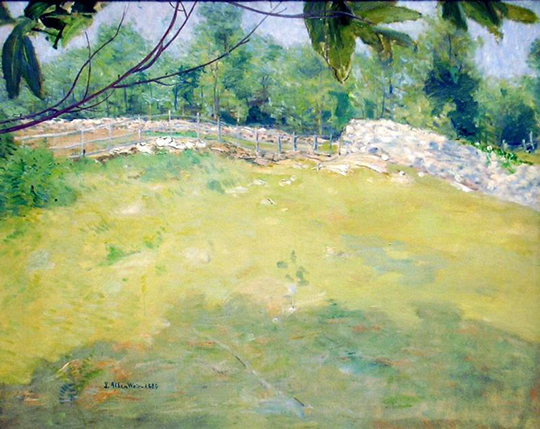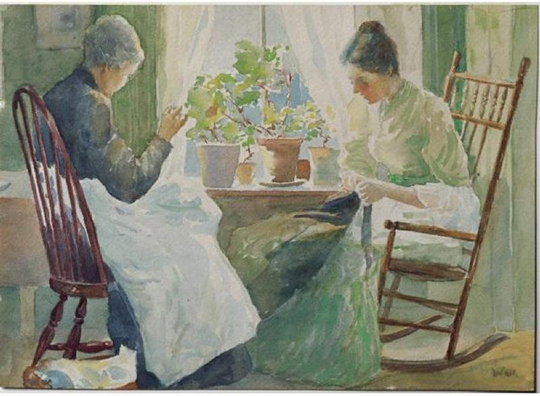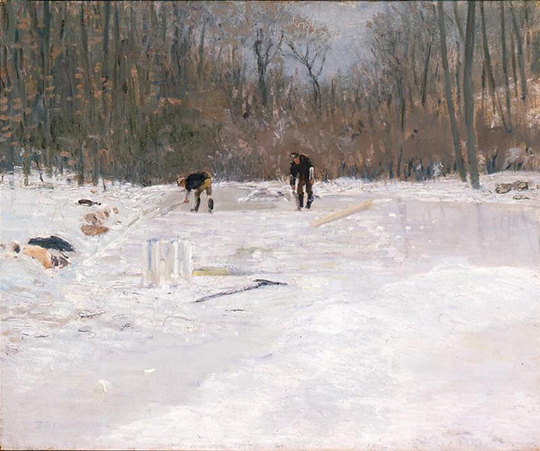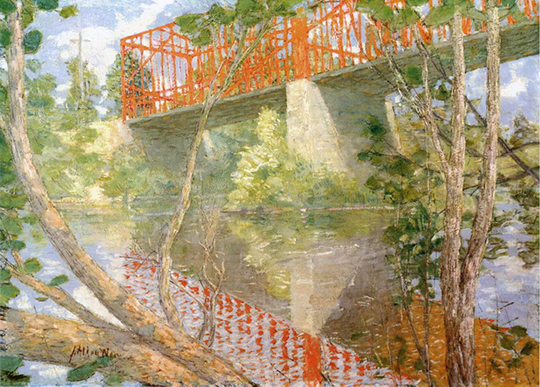Julian Alden Weir (August 30, 1852 – December 8, 1919) helped pioneer American impressionist painting and was one of the founding members of “The Ten”, a loosely-allied group of American artists.
Weir was from a family of painters. He was the the fourteenth of sixteen children and from the beginning Julian showed an early interest in art. His father, a prominent painter of portraits and historical subjects, was professor of drawing at the U.S. Military Academy. His older brother, John Ferguson Weir, was a well-known painter and appointed the first director of the Yale School of Fine Arts in 1869.
Fine art was part of the family structure and encouraged, valued, taught and promoted. A different era where the fine arts was a viable and esteemed career.
Julian’s family offered him encouragement in his own career as a painter and, at age seventeen, Julian enrolled first in art classes at the National Academy of Design.
He was sent off with the blessing of his father, who told Julian: “Don’t return, old boy, until your veins flow with the rich mother’s milk of Art, fatten on it, and then let your own genius ripen with the experience of it.”
Weir painted impressionist landscapes and figurative works, many of which centered on his Connecticut farms at Branchville and Windham. His style varied from traditional, vibrant impressionism to a more subdued and shadowy tonalism. He also became skilled at etching.
Weir went on to become financially successful and well thought of among his peers, and he became president of the National Academy of Design and president of the Society of American Artist.
Weir died on December 8, 1919 due to heart disease. During his illness, he was comforted by his time at the Branchville farm, where he would sit on the porch, observe the farm’s natural beauty, and reflect on his full life.
As Weir wrote: “Really, I know not what I am best at. I believe I am a fisherman, dreamer and lover of nature…and if I lived to 120 I might become an artist.”






His legacy lives on at the National Historic Site in Connecticut
Sources from this article from http://www.nps.gov/wefa/historyculture/impressionism.htm





